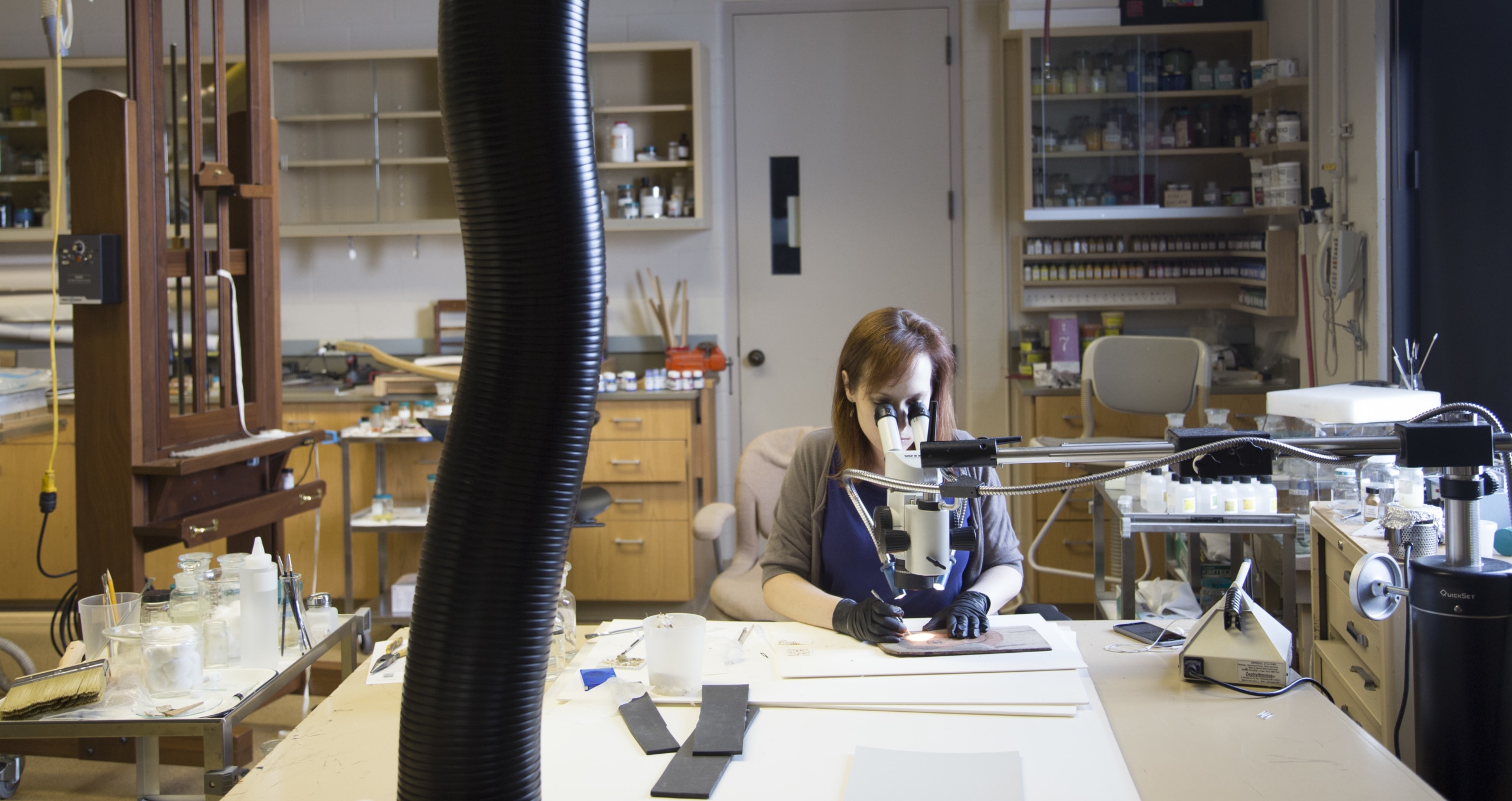The team at Conserv is growing! This week we are introducing: Claire Winfield. She is our new Conservation Liaison and a painting conservator. Before joining Conserv, Claire worked in private practice in New Orleans, Louisiana and for seven years at the Saint Louis Art Museum, where she led the institution’s light monitoring efforts. She graduated in 2010 from the SUNY Buffalo State College Art Conservation Program. (Banner Photo Credit: Hannah Becker, Saint Louis Art Museum)

Painting Conservator, Claire Winfield
What is your role on the Conserv team?
I am a “Conservation Liaison” at Conserv, so I help build our connections with museums, collections, and the broader cultural heritage community. As a conservator with lots of experience with dataloggers and environmental monitoring, I’m a great knowledge resource for our clients and have real-world insights for our product development at Conserv. I look forward to helping collections improve or start their environmental monitoring programs and providing collections with the support they need.
What is your experience with collections?
I have over a decade of experience working as a painting conservator in art museums, and I have also worked with several private conservation practices, a regional center, and as a research fellow. I’ve enjoyed my varied institutional experiences in addition to my conservation benchwork – things like public outreach, designing and conducting collection surveys, optimizing collections database software for efficient use, contributing to emergency preparedness and response, and working with loans, including managing incoming and outgoing loans, serving as a courier for domestic and international trips, and working exhibitions.
One of my biggest projects was evaluating light levels in a newly constructed daylit building; I worked with data from the architect’s lighting designers to develop monthly projections for each gallery space, set up and managed a multi-year collection plan with a fleet of 50 dataloggers, generated metrics and reports, advised on potential mitigation measures, and established new light exposure guidelines and a process for tracking object-specific cumulative light exposure.
Caring for collections is not simply fixing it when it’s broken or cleaning it when it’s dirty, it’s a holistic practice that considers every aspect of the object’s life and surroundings.
What excites you about Conserv?
Some institutions are fortunate to have professionals who are wholly committed to environmental monitoring, however, in most cases, it’s not someone’s full-time job – it’s often added to someone’s already-full (or overflowing) plate. Conserv provides devices and services that are specifically designed for the cultural heritage sector and brings clarity and efficiency to a critically important but sometimes arduous task.
As I learned more about the sensors and software, I was excited and relieved that so many of my previous frustrations had been solved. I admire Conserv’s dedication to customer service and to constantly improving their products – I love helping people and making things work better! Conserv gives people more hours in their day and provides excellent analytics and visualization tools to help people make sense of what’s going on in their environments.
Where do you see the company going in the future?
I think cumulative light exposure is a great opportunity for us to expand our offerings – you find variable light levels (often from daylight) in all kinds of collections, from historic houses and private homes to contemporary museum architecture. Daylight is not going away, so we need to be able to monitor it and understand how it’s affecting our collections. Cumulative light exposure models also allow custodians to “meter” out exposure, particularly for highly sensitive works, and ensures that we are considering and planning for an object’s long-term preservation needs.
I’d also love to see environmental data incorporated into collections database programs to streamline workflow and get a fuller picture of a given object’s history.
I like the idea of leveraging technology to help us do our jobs better, and I think there’s potential for us to develop predictive modeling for climates, and overlaying environmental data with IPM data to understand any causal relationships there. Technology can help us extend our reach, and I think there’s great opportunity for virtual couriering and easier monitoring of works on loan. Conserv is incredibly receptive to user feedback as well, which I think will help give our customers the features they need most.
If you have any questions about environmental monitoring, integrated pest management, or just want to talk about preventative conservation, please reach out to us! Don’t forget to check out our blog or join our community of collections care professionals where you can discuss hot topics, connect with other conservators or even take a course to get familiar with the Conserv platform.




